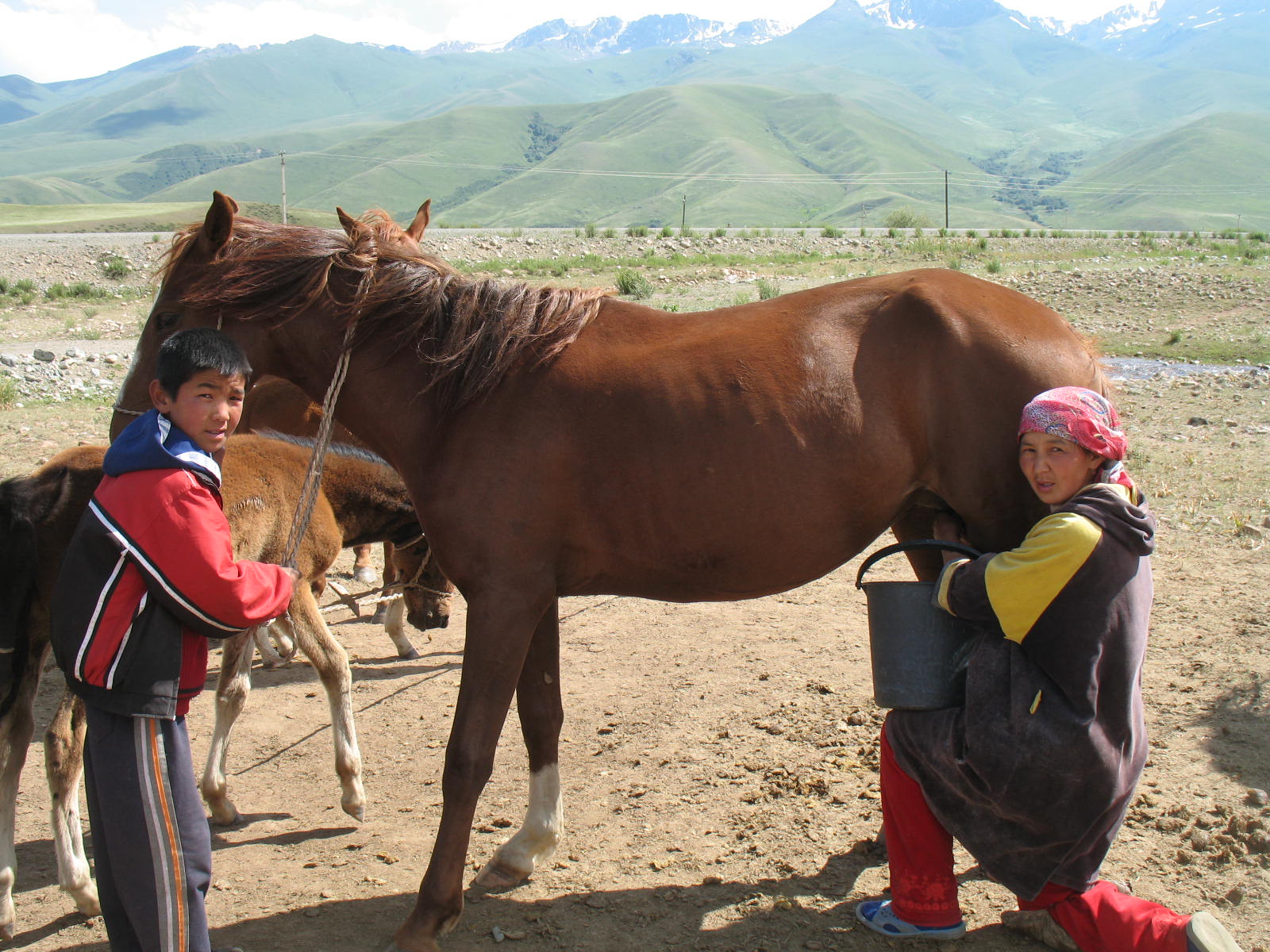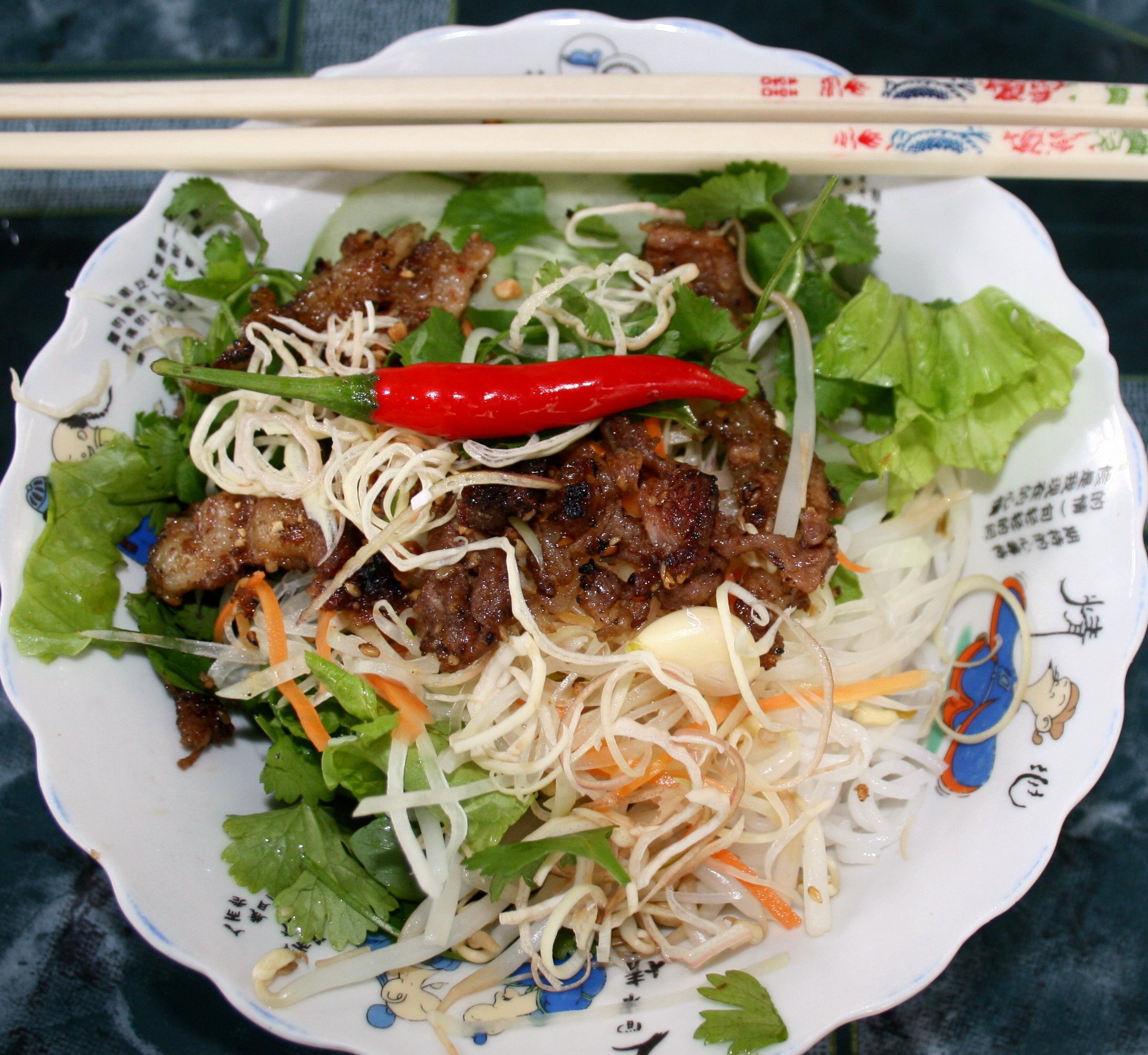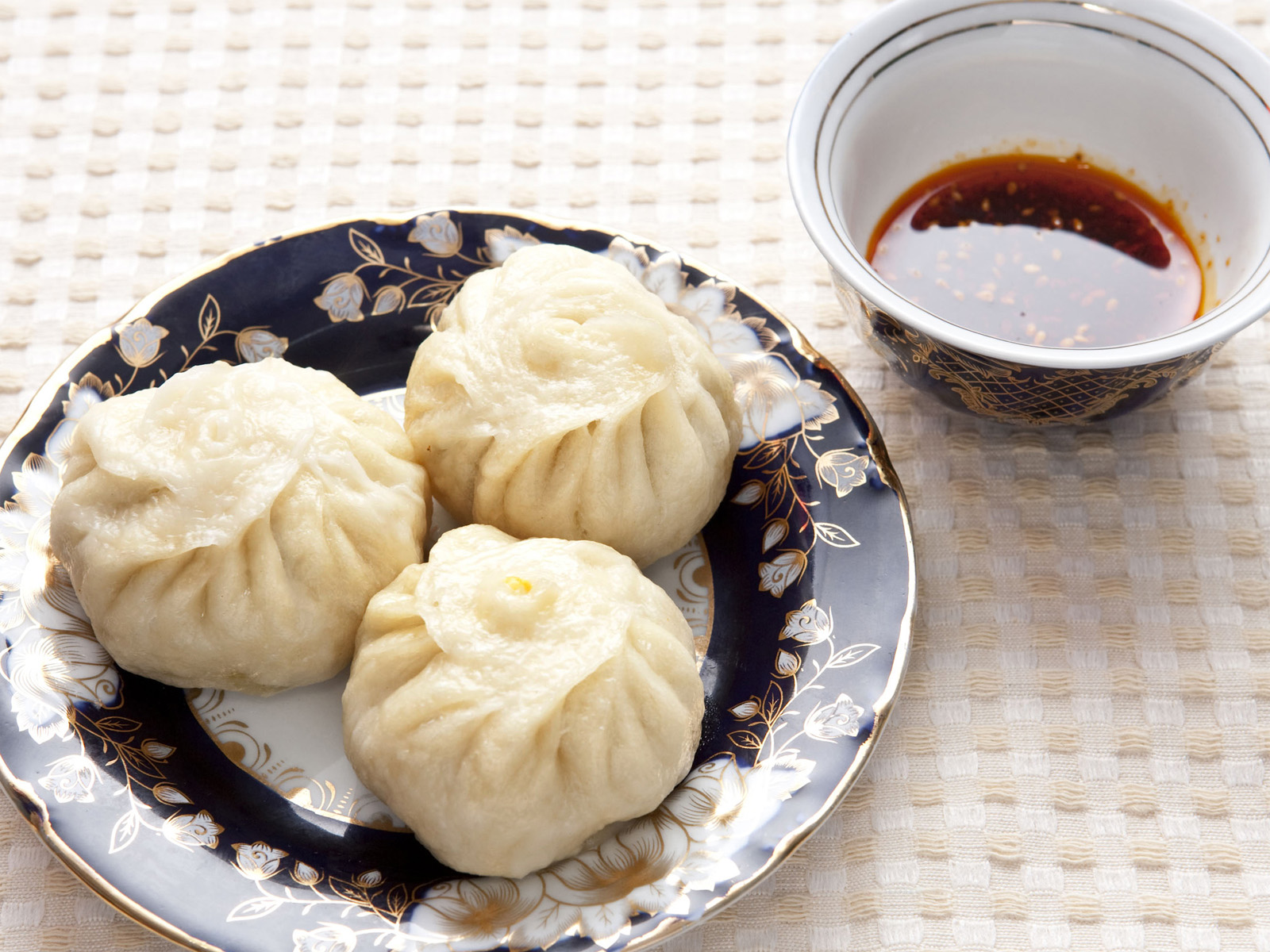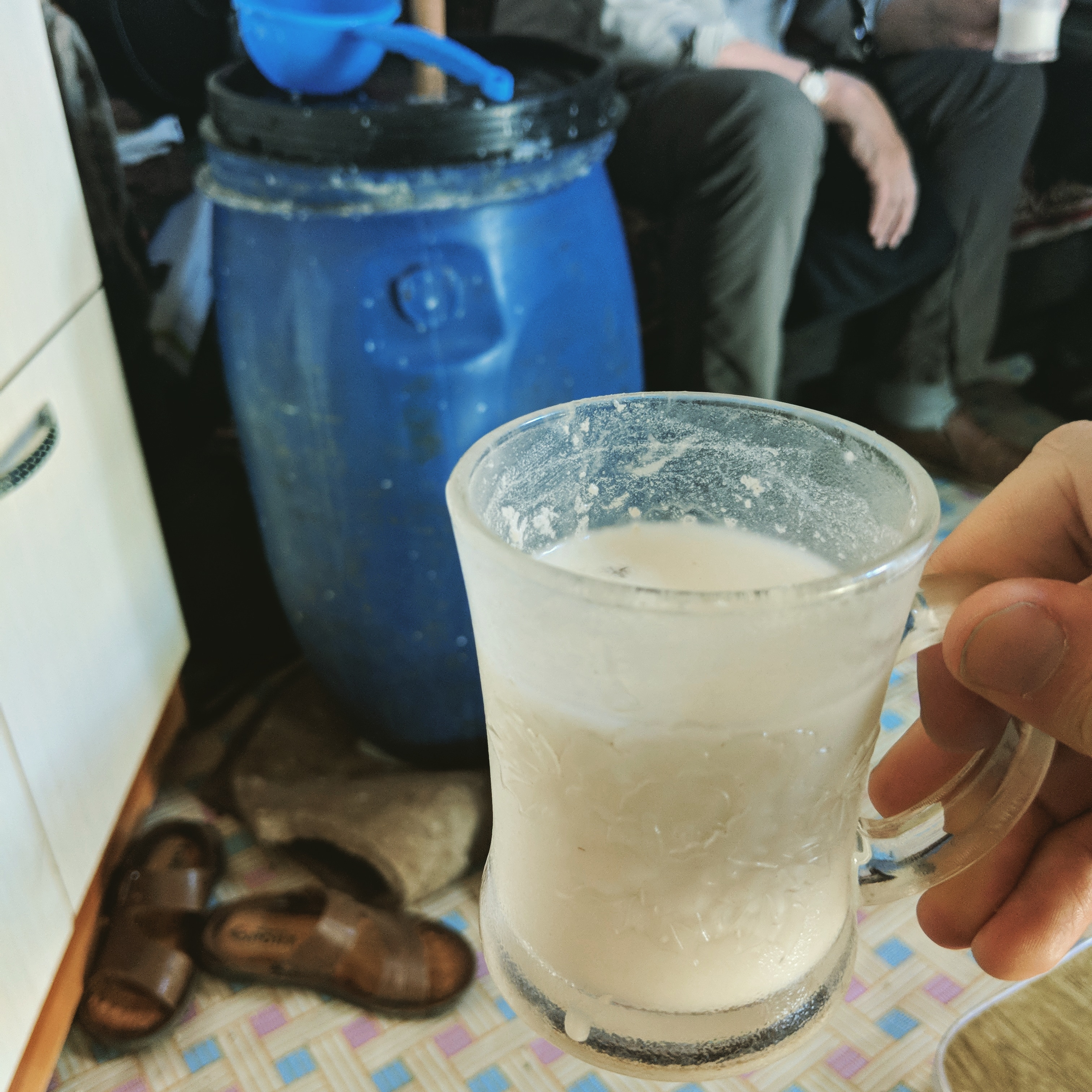|
Bashkir Cuisine
Bashkir cuisine () is the traditional cuisine of the Bashkirs. Their way of life, and the predominance of cattle breeding contributed culture, traditions, and cuisine of the Bashkirs. Traditional dishes and products Bashkir dishes are distinguished by a small number of classic spices: only Black pepper, black and Chili powder, red pepper are used. Another feature of Bashkir dishes is the abundance of meat in all hot dishes and snacks. The love of Bashkirs for horse sausage «Qazı» and horse fat deserves special attention: Bashkirs love to eat horsemeat with thick slices of fat, washed down with sour broth Kashk, Qurut (fermented milk product), neutralizing the effects of such an amount of fat. The semi-nomadic way of life (cattle ranching) led to the formation of a wide range of long-term storage products. The bulk of Bashkir national dishes are boiled, dried and dried horse meat, lamb and mutton, lamb, dairy products, dried berries, dried cereals, Bashkir honey, honey. E ... [...More Info...] [...Related Items...] OR: [Wikipedia] [Google] [Baidu] |
Beshbarmak
Beshbarmak (; ; ) is a dish in Central Asian cuisine. It is also known as naryn in Xinjiang, Uzbekistan, Kyrgyzstan and Kazakhstan, as ''turama'' in Karakalpakstan and North Caucasus, as ''dograma'' in Turkmenistan, as ''kullama'' in Bashkortostan and Tatarstan. It is one of the main national dishes of both Kyrgyzstan and Kazakhstan. The term ''beshbarmak'' means "five fingers" because nomads traditionally eat this dish with their hands. Another name for beshbarmak in Kyrgyz is ''tuuralgan et'', which means crumbled/chopped meat. Beshbarmak is usually made from finely chopped boiled meat, mixed with dough (typically egg noodles) and ''chyk'', an onion sauce. It is typically served on large communal platters, shared between several people, after shorpo, which is a first course of mutton broth served in bowls called kese. It is also followed by a broth called ak-serke (shorpo mixed with kymyz or ayran), which is thought to help with settling the stomach. Festive beshbarmak can be ... [...More Info...] [...Related Items...] OR: [Wikipedia] [Google] [Baidu] |
Koumiss
''Kumis'' ( , ), alternatively spelled ''coumis'' or ''kumyz'', also known as ''airag'' ( ), is a traditional fermented dairy product made from mare milk. The drink is important to the peoples of the Central and East Asian steppes, of Turkic and Mongolic origin: Kazakhs, Bashkirs, Kalmyks, Kyrgyz, Mongols, and Yakuts. Kumis was historically consumed by the Khitans, Jurchens, Magyars, and Han Chinese of North China as well. ''Kumis'' is a dairy product similar to kefir, but is produced from a liquid starter culture, in contrast to the solid kefir "grains". Because mare's milk contains more sugars than cow's or goat's milk, when fermented, ''kumis'' has a higher, though still mild, alcohol content compared to kefir. Even in the areas of the world where ''kumis'' is popular today, mare's milk remains a very limited commodity. Industrial-scale production, therefore, generally uses cow's milk, which is richer in fat and protein, but lower in lactose than the milk from a hors ... [...More Info...] [...Related Items...] OR: [Wikipedia] [Google] [Baidu] |
Qistibi
Qistibi (, , ) is a popular traditional dish in Tatarstan, Bashkortostan and Chuvashia. Qistibi is roasted flatbreads with various fillings inside. The dough should be unleavened. The most popular filling is mashed potato but it may also be ragout or millet. The filling is placed on one half of the flat cake and is covered by the other half. Later, clarified butter is spread on the flat cakes. See also * Çiberek * Gözleme * List of Russian dishes * List of stuffed dishes * Peremech * Puran poli References My Home - Tatar cuisine. Recipes with a photo. {{Flatbreads Flatbread dishes Bashkir cuisine Tatar cuisine Stuffed dishes ... [...More Info...] [...Related Items...] OR: [Wikipedia] [Google] [Baidu] |
Noodle
Noodles are a type of food made from unleavened dough which is either rolled flat and cut, stretched, or extruded, into long strips or strings. Noodles are a staple food in many cultures and made into a variety of shapes. The most common noodles are those derived from either Chinese cuisine or Italian cuisine. Chinese noodles are known by a variety of different names, while Italian noodles are known as pasta. While long, thin strips may be the most common, many varieties of noodles are cut into waves, helices, tubes, strings, or shells, or folded over, or cut into other shapes. Noodles are usually cooked in boiling water, sometimes with cooking oil or salt added. They can also be steamed, pan-fried, deep-fried, or baked. Noodles are often served with an accompanying sauce or in a soup, the latter being known as noodle soup. Noodles can be refrigerated for short-term storage or dried and stored for future use. Etymology The word for noodles in English was borrowed in the 1 ... [...More Info...] [...Related Items...] OR: [Wikipedia] [Google] [Baidu] |
Pelmeni
Pelmeni (, '' pel’meni'', ; pelmen, , '' pel’men’'', ) are dumplings of Russian cuisine that consist of a filling wrapped in thin, unleavened dough. They are considered to be a national dish. Pelmeni became a staple of Russian cuisine during the period of Russian expansion into the Ural Mountains and Siberia. Pelmeni also have deep roots in the traditions and folklore of the Komi region of northwest Russia and figure prominently in Komi cuisine. The name itself was borrowed from the language of the Komi-Permyaks. Description The dough is made from flour and water, sometimes adding a small portion of eggs. Pelmeni can be served in several ways; for example, they can be cooked in stock, or they can be cooked ''consommé'' and served in a bowl with soup. Pelmeni can be served as a main dish for lunch or dinner, either smothered in butter or prepared Siberian-style, which involves sprinkling them with vinegar and adding freshly ground pepper for extra flavor. The filli ... [...More Info...] [...Related Items...] OR: [Wikipedia] [Google] [Baidu] |
Far East
The Far East is the geographical region that encompasses the easternmost portion of the Asian continent, including North Asia, North, East Asia, East and Southeast Asia. South Asia is sometimes also included in the definition of the term. In modern times, the term ''Far East'' has widely fallen out of use and been substituted by Asia–Pacific, while the terms Middle East and Near East, although now pertaining to different territories, are still commonly used today. The term first came into use in European geopolitical discourse in the 15th century, particularly the British people, British, denoting the Far East as the "farthest" of the three "Easts", beyond the Near East and the Middle East. Likewise, during the Qing dynasty of the 19th and early 20th centuries, the term "Far West (Taixi), Tàixī ()" – i.e., anything further west than the Arab world – was used to refer to the Western countries. Since the mid-20th century, the term has mostly gone out of use for the region ... [...More Info...] [...Related Items...] OR: [Wikipedia] [Google] [Baidu] |
Ural Mountains
The Ural Mountains ( ),; , ; , or simply the Urals, are a mountain range in Eurasia that runs north–south mostly through Russia, from the coast of the Arctic Ocean to the river Ural (river), Ural and northwestern Kazakhstan.Ural Mountains , Encyclopædia Britannica on-line The mountain range forms part of the Boundaries between the continents of Earth, conventional boundary between the continents of Europe and Asia, marking the separation between European Russia and Siberia. Vaygach Island and the islands of Novaya Zemlya form a further continuation of the chain to the north into the Arctic Ocean. The average altitudes of the Urals are around , the highest point being Mount Narodnaya, which reaches a height of . The mountains lie within the Ural (region), Ural geographical region and significantl ... [...More Info...] [...Related Items...] OR: [Wikipedia] [Google] [Baidu] |
Manti (food)
Manti is a type of dumpling mainly found in Turkish cuisine, Armenian cuisine and Central Asian cuisine but also in West Asia, South Caucasus, and the Balkans. Manti is also popular among Chinese Muslims, and it is consumed throughout post-Soviet countries, where the dish spread from the Central Asian republics.More Than Just Another Dumpling , The School of Russian and Asian Studies, retrieved 25 January 2014 The dumplings typically consist of a spiced meat mixture, usually lamb or , wrapped in a thin dough sheet which is then boiled or steamed. The size and shape of manti vary significantly depending on geographi ... [...More Info...] [...Related Items...] OR: [Wikipedia] [Google] [Baidu] |
Kumis
''Kumis'' ( , ), alternatively spelled ''coumis'' or ''kumyz'', also known as ''airag'' ( ), is a traditional Fermented milk products, fermented dairy product made from mare milk. The drink is important to the peoples of the Central and East Asian steppes, of Turkic peoples, Turkic and Mongolic peoples, Mongolic origin: Kazakhs, Bashkirs, Kalmyks, Kyrgyz people, Kyrgyz, Mongols, and Yakuts. Kumis was historically consumed by the Khitan people, Khitans, Jurchen people, Jurchens, Magyars, and Han Chinese of North China as well. ''Kumis'' is a dairy product similar to kefir, but is produced from a liquid starter culture, in contrast to the solid kefir "grains". Because mare's milk contains more sugars than cow's or goat's milk, when fermented, ''kumis'' has a higher, though still mild, alcohol (drug), alcohol content compared to kefir. Even in the areas of the world where ''kumis'' is popular today, mare's milk remains a very limited commodity. Industrial-scale production, ther ... [...More Info...] [...Related Items...] OR: [Wikipedia] [Google] [Baidu] |
Ayran
Ayran ( ) is a cold savory yogurt-based beverage that is consumed across Central Asia, and the Balkans, in Turkey and Iran. The principal ingredients are yogurt, water and salt. Herbs such as mint may be optionally added. Some varieties are carbonated. It is a national drink of Turkey. Etymology ''Ayran'' (cf. '' airag'' in Mongolian: ' mare milk', ' () in Chuvash: 'buttermilk') is mentioned in Mahmud al-Kashgari's 11th century '' Dīwān Lughāt al-Turk'', although he did not give any information how ayran was made. The word is derived from the Old Turkic root ("to separate"), cf. Turkish ("to separate"). Preparation Ayran is served chilled and often as an accompaniment to grilled meat, bread or rice, especially during summer. It is made by mixing yogurt with chilled or iced water and is sometimes carbonated and seasoned with mint. It has been variously described as "diluted yogurt" and "a most refreshing drink made by mixing yogurt with iced water". The traditiona ... [...More Info...] [...Related Items...] OR: [Wikipedia] [Google] [Baidu] |







